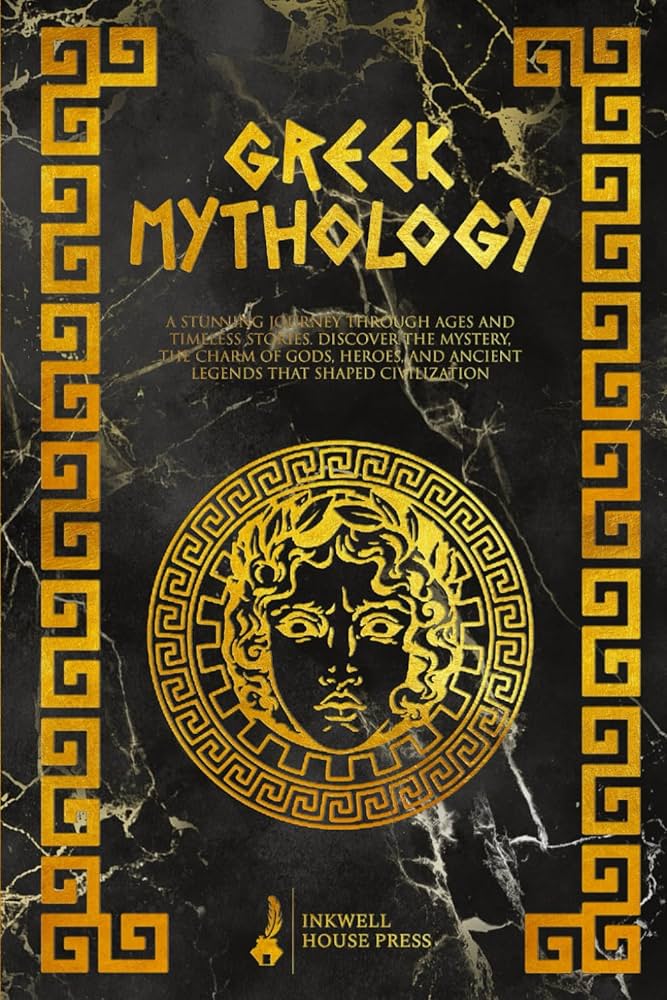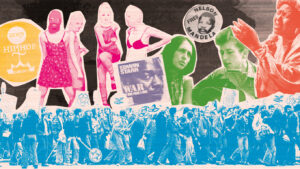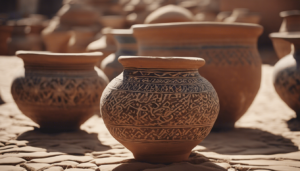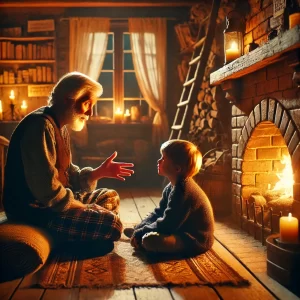Ancient mythologies have demonstrated remarkable resilience, intricately weaving their rich narratives and timeless archetypes into the fabric of contemporary literature and film, influencing modern storytelling across genres such as fantasy, science fiction, and drama.
From heroic journeys reminiscent of Greek and Roman mythology to vivid imagery inspired by Indian and Egyptian mythology, these age-old stories continue to significantly influence modern narratives and cultural mythology.
This exploration aims to examine how mythological themes, such as themes of fate, power, and morality, are reflected in character development, plot structures, and visual storytelling, while also addressing the controversies surrounding their adaptation and reimagining in today’s media.
This study invites a thorough investigation into the profound influence of ancient mythologies on contemporary storytelling.
How Do Ancient Mythologies Influence Modern Literature and Films?
.jpg_00.jpeg)
Ancient mythologies have historically served as a fundamental component of storytelling, significantly influencing modern literature and film by providing a rich array of archetypes, heroes, and moral lessons that resonate across various cultures, shaping cultural narratives and inspiring literary and cinematic techniques.
From the epic narratives of Greek and Norse mythology to the intricate tales found in Hindu and Egyptian folklore, these ancient stories continue to shape narrative structures and character development in contemporary works.
They not only inspire authors and filmmakers but also facilitate the exploration of universal truths and cultural identities through creative adaptation, intertextuality, and narrative devices, reflecting on societal values and contemporary issues.
This enduring legacy underscores the importance of mythology in both comprehending our historical context and interpreting current cultural narratives.
1. Archetypes and Character Development
Archetypes derived from ancient mythologies play a crucial role in character development, offering a framework for understanding the motivations and conflicts encountered by mythic heroes in contemporary narratives. These archetypes not only provide a blueprint for character journeys but also reflect underlying psychological motifs that resonate with audiences, illustrating themes of duality and transformation.
By incorporating these archetypal figures into their stories, authors and filmmakers can craft emotionally rich character arcs that delve into the human condition and moral dilemmas, thereby enhancing the narrative depth, thematic resonance, and relatability of their characters.
The hero archetype, often embarking on a quest, embodies courage and resilience, enabling audiences to connect with their struggles against adversity. Notable examples include the iconic journeys of characters such as Frodo Baggins in J.R.R. Tolkien’s *The Lord of the Rings* and Katniss Everdeen from *The Hunger Games*.
Conversely, the mentor archetype—represented by figures like Gandalf or Mr. Miyagi—imparts wisdom and guidance, often facilitating the protagonist’s growth and self-discovery. Simultaneously, the trickster archetype, exemplified by characters like the Joker or Loki, introduces chaos and unpredictability, prompting both heroes and viewers to confront moral ambiguities.
Collectively, these archetypes function as essential tools for exploring identity, conflict, and the emotional landscapes of their respective narratives.
2. Hero’s Journey and Plot Structure
The Hero’s Journey, as articulated by Joseph Campbell’s concept of the monomyth, serves as a foundational plot structure that draws extensively from ancient mythologies to inform contemporary storytelling in literature and film. This narrative framework encapsulates the essential journey of heroes as they undertake epic quests, confront trials and tribulations, and ultimately experience significant transformation.
By adhering to this archetypal plot structure, creators can develop compelling narratives that resonate with audiences, highlighting universal themes such as sacrifice, identity, and moral conflict throughout their character arcs.
Historically, a wide array of works has embraced this classic journey, ranging from Homer’s ‘Odyssey’ to modern cinematic masterpieces such as ‘The Lord of the Rings’ and ‘Star Wars,’ illustrating the narrative parallels and cultural impact of the hero’s journey. These narratives not only delineate the phases of departure, initiation, and return but also examine the intricate relationship between destiny and personal evolution.
For example, the resolution of the protagonist’s internal conflicts often underscores themes of transformation and fate, creating a rich tapestry that engages viewers. This structure facilitates a deep connection between audiences and characters as they navigate unforeseen challenges and emerge fundamentally changed, reinforcing the enduring relevance of the Hero’s Journey across diverse storytelling mediums.
3. Symbolism and Themes
Symbolism derived from ancient mythologies is essential to the thematic richness of modern literature and films, providing a means to explore complex ideas and moral lessons through allegory and cultural symbolism.
The incorporation of mythic elements—such as deities, rituals, and mythological creatures—enhances narratives, enabling authors and filmmakers to convey profound truths about the human experience, identity, and the nature of conflict.
By embedding symbolism within their works, creators can evoke emotional resonance and stimulate critical thought, inviting audiences to engage with universal themes that transcend both time and culture.
For instance, in recent cinematic achievements such as “Pan’s Labyrinth,” the integration of Spanish folklore with the stark realities of war not only highlights the struggle between innocence and brutality but also examines the moral ambiguities that arise from such conflicts.
Similarly, literary works like “Circe” by Madeline Miller recontextualize ancient myths to explore themes of female identity and give the power toment, challenging traditional narratives while reflecting contemporary societal issues.
These examples illustrate how archetypal symbols and themes rooted in ancient mythologies serve as powerful instruments in modern storytelling, facilitating a dialogue between the past and present while illuminating our collective values and dilemmas.
5. Visual Imagery and Special Effects
In contemporary literature and film, visual imagery and special effects are instrumental in bringing ancient mythologies to life, thereby enhancing storytelling through the dynamic representation of mythological creatures, epic landscapes, and transformative moments.
By employing advanced cinematic techniques, filmmakers can produce breathtaking visuals that evoke the grandeur and mystique inherent in ancient myths. This allows audiences to immerse themselves in fantastical worlds rich in cultural symbolism and mythic narratives. Such visual storytelling not only captivates viewers but also reinforces the themes and emotional depth present in the underlying narratives.
For instance, films like “Pan’s Labyrinth” and “Percy Jackson & The Olympians” effectively utilize visual effects to translate complex mythological elements into relatable experiences for contemporary audiences.
In “Pan’s Labyrinth,” Guillermo del Toro skillfully intertwines haunting imagery with striking fantasy elements that reflect the tragic dimensions of myth, thereby creating a profound emotional landscape. Similarly, the vibrant special effects in “Percy Jackson” vividly depict the ancient Greek pantheon and their trials, making these stories accessible to a younger generation.
These adaptations exemplify how visually stunning techniques not only bring narratives to life but also enhance the viewer’s comprehension of timeless themes such as heroism, sacrifice, the eternal struggle between good and evil, and the symbolic meaning inherent in mythological references.
6. Storytelling Techniques
Storytelling techniques rooted in ancient mythologies significantly influence the narrative structures and genre blending that define contemporary literature and film. These techniques provide creators with a versatile toolkit for engaging audiences on multiple levels.
By integrating mythic elements and traditional narratives into their works, authors and filmmakers are able to explore complex themes, character arcs, and moral conflicts, thereby fostering emotional resonance that captivates both viewers and readers. This incorporation of ancient methods into modern storytelling underscores the ongoing relevance of mythology in shaping cultural narratives and inspiring creativity.
For example, the classic hero’s journey is prominently featured in both epic fantasies like “The Lord of the Rings” and modern superhero films such as “Black Panther.” This motif emphasizes the universal quest for identity and belonging.
Additionally, the blending of genres, as exemplified by films like “Pan’s Labyrinth,” enriches narratives through the juxtaposition of stark realities with whimsical myth, inviting audiences to explore both emotional depths and enchanting realms.
These storytelling techniques not only enhance character development and narrative structure but also encourage reflection on timeless human struggles, exemplifying the enduring legacy of myth in crafting compelling narratives that resonate across generations and influence modern adaptations.
7. Character Motivations and Relationships
.jpg_01.jpeg)
Character motivations and relationships shaped by ancient mythologies contribute significant depth and complexity to modern narratives. Mythic heroes navigate emotional landscapes characterized by transformative arcs and moral conflicts.
These relationships often mirror archetypal dynamics present in traditional tales, enabling authors and filmmakers to explore themes of sacrifice, identity, love, and the human experience through the prism of mythic narratives and mythological creatures. By analyzing these character dynamics, creators can evoke emotional responses from audiences while underscoring the enduring relevance of mythology in storytelling.
For instance, in films such as “The Lion King,” the relationship between Simba and Mufasa exemplifies the tension between personal ambition and familial duty, reflecting a classic hero’s journey of self-discovery and redemption, showcasing archetypes and storytelling motifs that resonate with audiences.
Similarly, in modern literature like “Harry Potter,” the friendships formed among characters illustrate how loyalty and sacrifice can propel the narrative forward and shape destinies, highlighting themes of love and power.
As these connections evolve, they often lead to transformative experiences that illuminate both the internal and external conflicts faced by the heroes, ultimately reshaping their identities and moral frameworks. The interplay of motivations and relationships encapsulates the essence of what it means to be human, resonating across the spectrum of both ancient and contemporary storytelling.
8. Mythological Creatures and Settings
The incorporation of mythological creatures and settings in modern literature and film significantly enhances world-building, creating immersive experiences that transport audiences into realms where fantasy, horror, and drama converge, and reflect societal values and cultural impact.
By drawing upon ancient mythologies, creators can populate their narratives with iconic beings and fantastical landscapes that not only enrich visual storytelling but also function as metaphors for underlying themes and character development. This integration of mythological elements into contemporary narratives facilitates the exploration of universal truths while highlighting the cultural symbolism inherent in these traditions.
For example, in films such as ‘Pan’s Labyrinth,’ the blending of historical reality with mythical creatures intensifies the emotional resonance of the narrative, suggesting that an escape into fantasy can offer solace during times of turmoil. Similarly, in literature, works like ‘American Gods’ by Neil Gaiman utilize diverse mythologies to examine themes of identity and belief within modern society.
By grounding characters in these rich traditions, the stories acquire additional layers of meaning, prompting audiences to reflect on their own cultural narratives.
Ultimately, mythological frameworks invigorate storytelling, enabling various genres to explore the complexity of the human experience through a fantastical lens.
Examples of Ancient Mythologies in Modern Literature and Films
Ancient mythologies have been adapted into a wide variety of modern literature and films, demonstrating their enduring appeal and significant influence on contemporary storytelling, serving as narrative devices in reimagining classic literature and folklore.
From the reinterpretation of Greek myths in the Percy Jackson series to the Norse influences present in Marvel’s Thor franchise, these adaptations not only provide entertainment but also serve as vehicles for exploring cultural narratives and themes such as heroism, identity, and moral lessons, utilizing adaptation theory and comparative mythology.
Each retelling offers fresh perspectives on classic tales, inviting audiences to engage with the intricate tapestry of world mythology and its relevance to modern society, reflecting genre conventions and poetic devices.
1. Greek Mythology in Percy Jackson Series
The Percy Jackson series serves as a creative adaptation of Greek mythology, skillfully integrating ancient gods and heroes into a contemporary setting that resonates with young readers while emphasizing themes of identity and belonging, using literary analysis to explore psychological depth and narrative parallels.
Through the character development of demigods such as Percy, Annabeth, and Grover, the series delves into their challenges and victories, drawing upon mythological elements and traditional narratives to construct relatable stories that address modern issues. This contemporary retelling not only provides entertainment but also educates readers about the intricacies of Greek mythology, its characters, and the universal truths they represent.
By incorporating these mythological references into the characters’ journeys, the series establishes a connection between the ancient and modern worlds, enabling readers to identify parallels in their own experiences. The trials encountered by these young heroes reflect real-world challenges, including themes of friendship, loyalty, and the pursuit of self-discovery.
As the narrative progresses, fans of the series are prompted to contemplate their own values and beliefs, thereby fostering a deeper connection to these timeless tales. Such relevance not only captivates the imagination but also ensures that the lessons of Greek mythology remain significant and impactful for future generations.
2. Norse Mythology in Thor and Avengers Franchise
The portrayal of Norse mythology within the Marvel Cinematic Universe, particularly through the character of Thor, exemplifies how ancient mythological narratives can be adapted into blockbuster films. This adaptation effectively combines elements of action, fantasy, and humor while retaining fundamental mythic aspects.
As Thor and his companions embark on their epic quests, the franchise weaves in mythological references that underscore themes of heroism, sacrifice, and transformation, thereby enabling audiences to engage with these timeless narratives in a modern context. This cinematic representation not only provides entertainment but also serves as an entry point for viewers to explore the depth of Norse mythology and its cultural significance.
The evolution of Thor’s character offers audiences a profound depiction of growth that parallels the transformative hero’s journey found in classical literature. The films skillfully blend elements of comedy and drama, resulting in a compelling narrative that captivates the imagination while imparting knowledge about the cultural motifs inherent in these stories.
By examining the complex relationships between gods and humans, as well as the repercussions of their actions, these adaptations foster a deeper comprehension of the moral and philosophical lessons embedded within Norse mythology. This thoughtful balance not only appeals to enthusiasts of action-oriented cinema but also stimulates interest in ancestral myths, ultimately enriching the overall viewing experience.
3. Egyptian Mythology in The Mummy Series
The Mummy series is deeply rooted in Egyptian mythology, intricately weaving narratives of ancient gods, curses, and mythological creatures into a compelling fusion of adventure and horror that engages audiences effectively, illustrating the use of supernatural elements and thematic exploration.
At its essence, the depiction of mythological figures such as mummies, scarabs, and the duality of life and death not only reflects the artistic inspirations of the filmmakers but also embodies the profound fears and fascinations surrounding the afterlife prevalent in ancient cultures, showcasing the cultural narratives and allegorical implications.
The series offers a reinterpretation of these mythological narratives, illustrating the malevolent forces associated with ancient practices and the dangers encountered by those who dare to disturb sacred tombs. This approach not only underscores the horror elements inherent in each interaction with these beings but also serves as a reminder of the rich tapestry of stories that connect generations throughout history.
The cultural significance of the series is profound, shaping audience perceptions by emphasizing themes of fate, loyalty, and the tragic consequences of pride when confronting a past that remains ever-present.
Ultimately, these adaptations resonate with viewers, enabling them to engage with the complexities of Egyptian mythology in a modern context.
4. Indian Mythology in The Ramayana and Mahabharata Adaptations
.jpg_10.jpeg)
Adaptations of the Ramayana and Mahabharata persist in revitalizing Indian mythology, illuminating the profound cultural narratives and moral lessons inherent in these epic texts. Through various storytelling mediums—including literature, film, and television—these adaptations delve into themes of duty, righteousness, and the complexities of human relationships, while faithfully upholding the core principles of Indian mythology.
By reinterpreting these ancient tales for contemporary audiences, creators underscore the enduring significance of these narratives in addressing modern issues related to identity, culture, and social values.
The importance of these adaptations extends beyond mere entertainment; they function as a bridge that connects the rich heritage of Indian storytelling to the present generation. For instance, the productions ‘Ramayana’ and ‘Mahabharata,’ which aired in the late 1980s, became cultural phenomena, fostering a sense of pride and familiarity with the characters and their moral dilemmas.
More recent works, such as the critically acclaimed series ‘Sacred Games,’ skillfully weave elements of Indian mythology with contemporary themes, prompting viewers to reflect on timeless conflicts such as good versus evil within today’s socio-political context, showcasing narrative arcs and cultural symbolism.
By continuously evolving and adapting these stories, filmmakers and authors encourage deeper engagement, enabling audiences to contemplate their own values in light of the timeless wisdom encapsulated in these epics.
The Controversy Surrounding the Use of Ancient Mythologies in Modern Media
The incorporation of ancient mythologies in contemporary media frequently generates controversy, particularly in relation to cultural appropriation and representation, highlighting adaptation challenges and the importance of respecting cultural heritage.
Creators face the challenge of balancing inspiration with the risk of misrepresentation. As storytelling evolves, the adaptation of these mythologies prompts critical discussions regarding the ethical implications of drawing from diverse cultures, especially when there is a failure to accurately depict their narratives and significance.
This ongoing discourse underscores the necessity for sensitivity and respect in the representation of ancient myths, as well as the vital role of cultural exchange in enhancing modern narratives.
1. Cultural Appropriation and Misrepresentation
Cultural appropriation and the misrepresentation of ancient myths in contemporary media present significant ethical challenges, as creators must navigate the delicate balance between inspiration and exploitation. When ancient narratives are adapted without an in-depth understanding of their cultural contexts, the risk of perpetuating stereotypes and oversimplifications increases, resulting in a distortion of the original mythologies and their meanings.
This underscores the necessity of conducting comprehensive research and collaborating with cultural experts to ensure that adaptations honor the richness and complexity of the source material.
The impact of such adaptations extends beyond the creators to the audience, who may internalize misleading representations that shape their perceptions of diverse cultures. When myths are misrepresented, audiences not only miss the authentic essence of these narratives but may also form a distorted view of the cultures from which they originate.
Consequently, it is essential for storytellers to approach adaptations with a profound sense of responsibility, striving to depict these ancient tales with authenticity and respect. By doing so, they can foster a meaningful bridge for cultural exchange rather than a barrier of misunderstanding.
2. Blurring the Lines Between Fact and Fiction
The blurring of lines between fact and fiction in adaptations of ancient mythologies presents challenges for both creators and audiences, as the distinction between historical truths and mythological narratives becomes increasingly ambiguous. This phenomenon raises significant questions regarding the role of storytelling in shaping cultural narratives, particularly when mythological elements are presented as factual accounts or historical events.
Such portrayals can influence perceptions of cultural identity and heritage, necessitating a critical examination of how these adaptations affect audience understanding of the original myths.
Contemporary films and series frequently draw heavily from ancient stories, crafting visually captivating experiences that may overshadow the deeper lessons and cultural significance embedded within the original narratives. In instances where heroes and gods are reimagined for modern audiences, the essence of their journeys may be simplified or altered, resulting in a reinterpretation of cultural values.
The depiction of characters such as Hercules or Thor may reflect virtues that resonate with contemporary values; however, these portrayals can obscure the complex moral and philosophical dimensions that the original myths were intended to convey. Consequently, audiences may find themselves grappling with a new version of these narratives that, while entertaining, may not accurately reflect their historical context or the societal lessons originally intended.
3. Impact on the Preservation of Ancient Cultures
The impact of modern media on the preservation of ancient cultures presents a dual challenge, as adaptations of mythologies can simultaneously celebrate and threaten cultural heritage.
While these adaptations can cultivate interest and appreciation for ancient narratives, they also risk oversimplifying complex stories, potentially diluting the richness of the original myths and jeopardizing their preservation for future generations. This dynamic highlights the necessity for a balanced approach that honors the intricacies of ancient cultures while effectively engaging modern audiences through cultural exchange and respectful representation.
As contemporary storytelling increasingly unfolds within visual platforms, the appeal of cinematic adaptations can draw in a diverse audience, encouraging exploration of the depth inherent in these ancient tales. However, this very appeal can lead to the temptation to modify narratives for broader appeal, which may inadvertently obscure nuanced cultural contexts and values that are integral to the stories.
Consequently, this results in a cultural mosaic in which ancient traditions may be celebrated in certain respects, yet specificity and authenticity could be compromised in others. Therefore, while engagement with modern media has the potential to introduce ancient cultures to new generations, the ongoing challenge remains to ensure that these adaptations do not undermine the integrity and authenticity of the stories they aim to convey.
Frequently Asked Questions
How do ancient mythologies influence modern literature and films?
.jpg_11.jpeg)
Ancient mythologies have been a source of inspiration for modern literature and films for centuries. Many writers and filmmakers draw upon themes, characters, and stories from ancient mythologies to create their own works.
Which ancient mythologies have the most influence on modern literature and films?
The most influential ancient mythologies on modern literature and films include Greek, Roman, Norse, Egyptian, and Indian mythologies. These cultures have rich and diverse mythologies that have been incorporated into countless works of art.
What are some examples of ancient mythologies in modern literature and films?
Some well-known examples of ancient mythologies in modern literature and films include J.K. Rowling’s “Harry Potter” series, which draws upon Greek and Roman mythologies, and the Marvel Cinematic Universe, which features characters from Norse mythology such as Thor and Loki.
How do modern writers and filmmakers adapt ancient mythologies for their works?
Modern writers and filmmakers often combine elements of ancient mythologies with contemporary themes and settings to create a new and unique story. They may also update characters and storylines to make them more relatable to modern audiences.
Why do ancient mythologies continue to have such a strong influence on modern literature and films?
Ancient mythologies contain timeless themes and archetypal characters that continue to resonate with audiences today. They also provide a rich source of inspiration and imagination for writers and filmmakers looking to create new and exciting stories.
How can understanding ancient mythologies enhance our enjoyment of modern literature and films?
By understanding the origins and themes of ancient mythologies, we can better appreciate the references and allusions made in modern literature and films. It also allows us to see how these timeless stories continue to shape and influence our culture.

My name is Bruno, I have been a writer for 5 years and I work with website creation. My goal is to provide true information to readers. In fact, on this site I write about cultures and traditions, which I have been passionate about since childhood.




